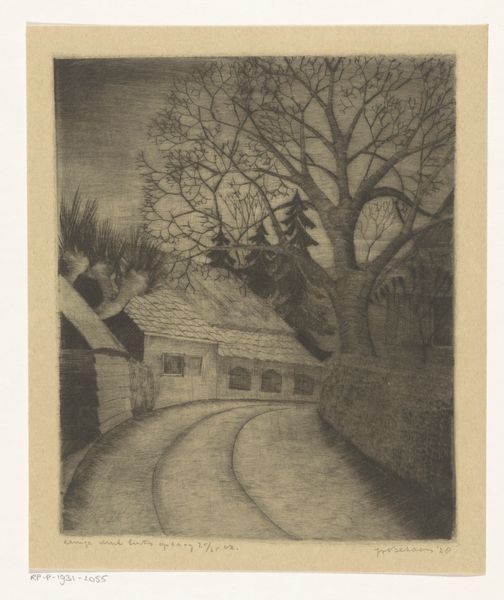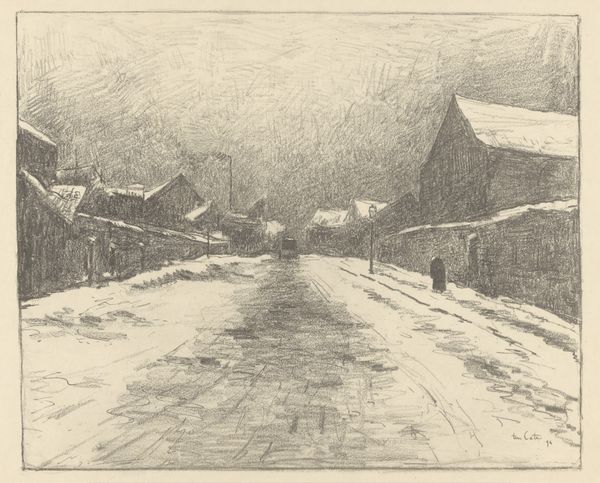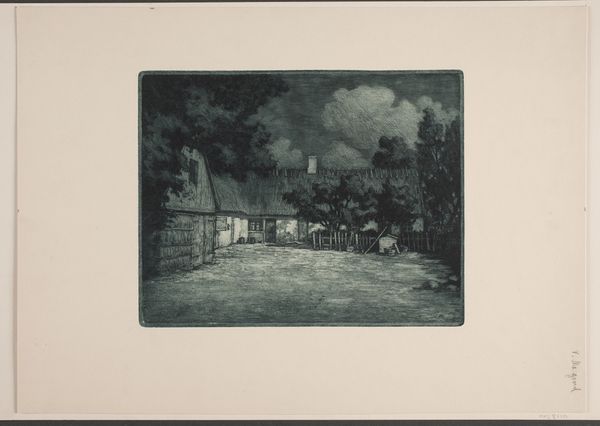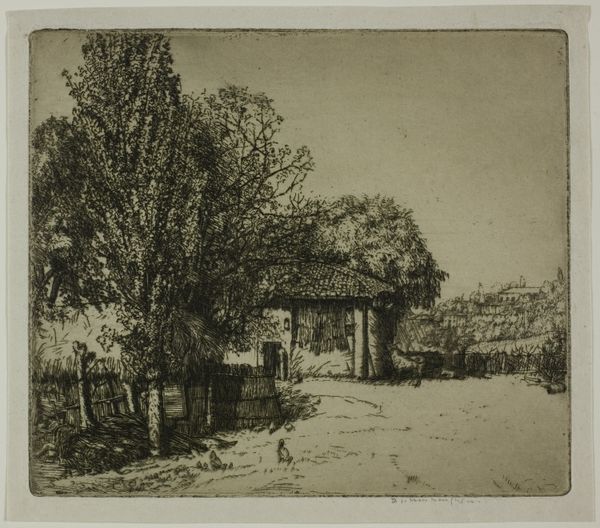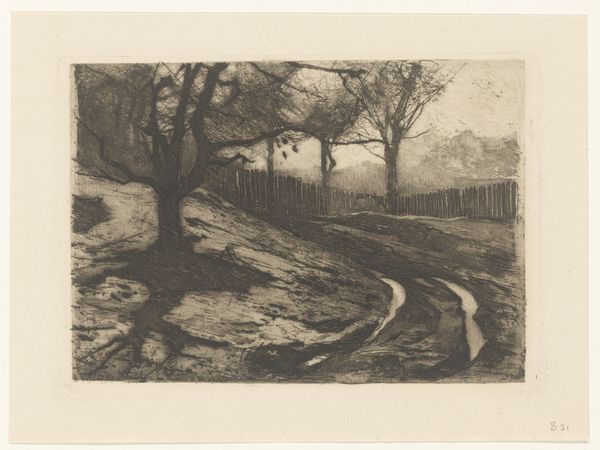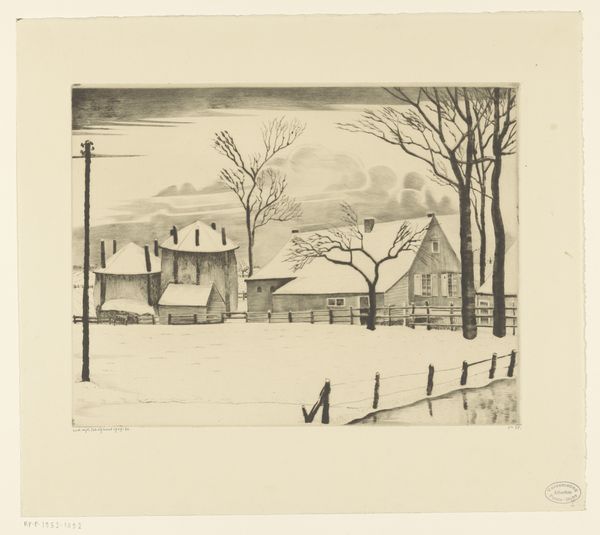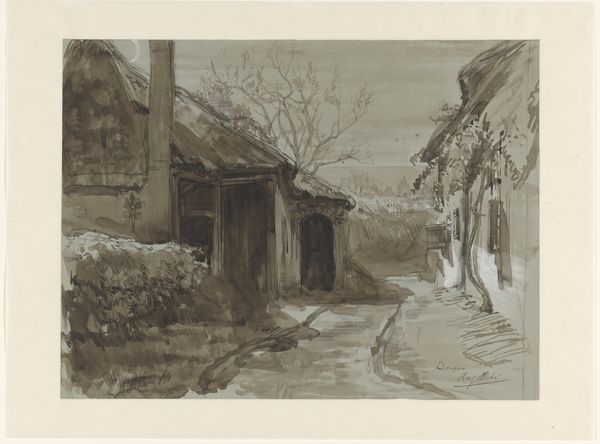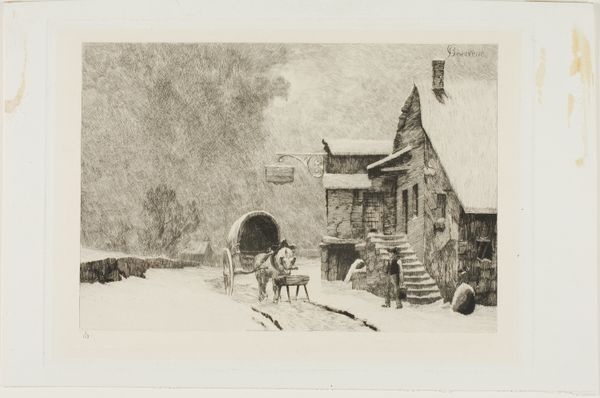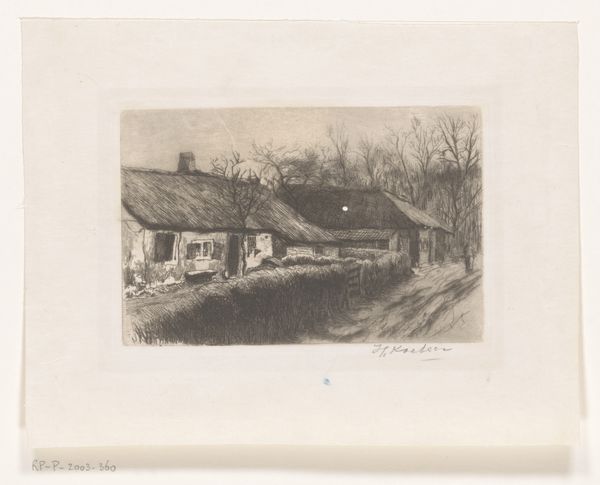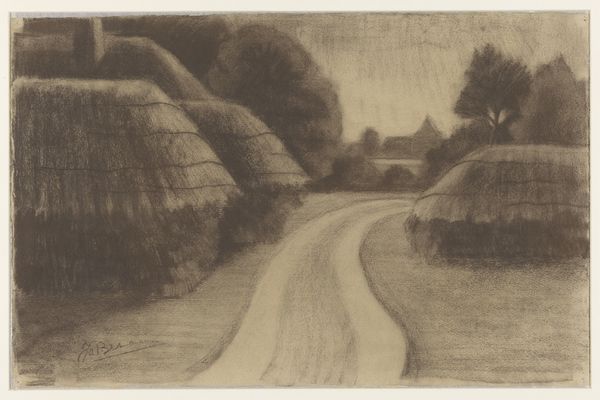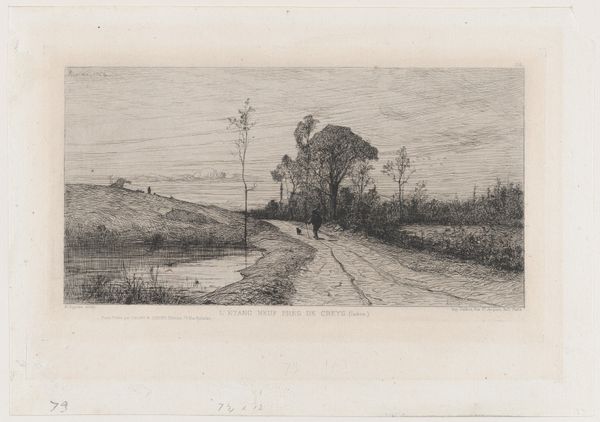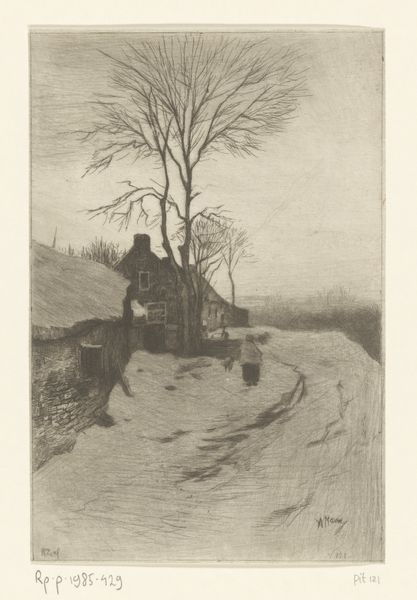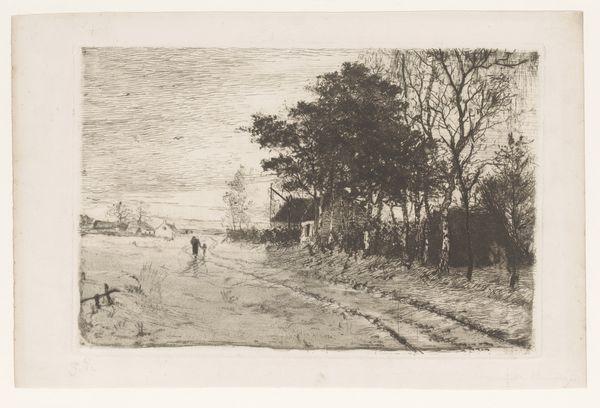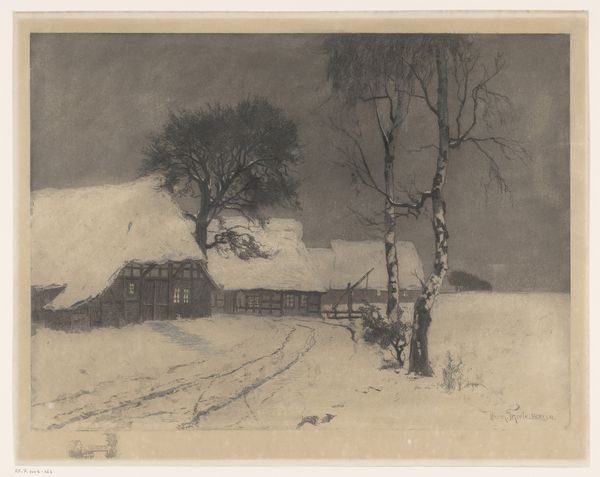
drawing, pencil, graphite
#
drawing
#
landscape
#
charcoal drawing
#
pencil drawing
#
pencil
#
graphite
#
genre-painting
#
realism
Dimensions: height 200 mm, width 343 mm, height 225 mm, width 362 mm
Copyright: Rijks Museum: Open Domain
Editor: This drawing, "Dorpsweg," was created in 1928 by Jo Bezaan using pencil and graphite. The quiet village lane it depicts has an almost melancholic feel. What social context might have shaped Bezaan’s vision? Curator: Considering the date, 1928, and the growing popularity of Realism, this image offers a glimpse into the idealization of rural life during a period of increasing industrialization and urbanization. How might the artist be positioning this simple village road in relation to the broader societal shifts of the time? Is it a celebration, a lament, or something in between? Editor: It's interesting you mention Realism. To me, there's almost a photographic quality to the meticulous details, a desire to capture reality faithfully. Curator: Exactly. Think about the art market in the Netherlands at this time. There was a burgeoning middle class seeking art that reflected their own experiences and values. Genre scenes, like this village road, resonated because they offered a relatable and perhaps idealized version of everyday life. Who was buying this type of art and why does that matter? Editor: So the "realism" isn't just about the style, it's connected to who was consuming and valuing art, creating a demand for familiar subjects. It highlights how art serves cultural and social needs. Curator: Precisely. And also, think about the role of institutions like the Rijksmuseum. By acquiring and displaying works like “Dorpsweg,” what message are they sending about Dutch identity and values? Does it showcase a romantic idea about simple village life, contrasting sharply to urban life, offering a space for the emerging city workers to escape the rapid changing world? Editor: It provides a snapshot of the period's values, the artist's view, and even the motivations of museums and collectors. Curator: Yes. This is why it's important to analyze the social role and public image and perception in artworks. What museums do for us today is that they show history, which can be understood from art works such as “Dorpsweg”.
Comments
No comments
Be the first to comment and join the conversation on the ultimate creative platform.
